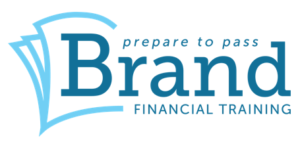Whether you are preparing for your exams, or simply want to keep your knowledge up-to-date, Professional Paraplanner’s Development Zone can help.
Every month, in conjunction with Brand Financial Training, we provide a series of questions from across the syllabus which aim to test your knowledge of the financial services market, as part of your overall self development training goals and exam techniques.
The following questions relate to examinable Tax year 23/24, examinable by the CII until 31 August 2024.
You will find the answers separately under the Development Zone tab on the Professional Paraplanner website.
QUESTIONS
1. Under the Consumer Rights Act 2015, the requirement for expressing significant terms is that they must
A. be individually negotiated with the consumer.
B. be in plain and intelligible language.
C. be forcible against the consumer.
D. take into account the consumer’s legitimate interests.
2. A retail client has asked you for the main disadvantages of investing through a portfolio of unit trusts and open-ended investment companies. You can tell them that (Tick all that apply.)
A. in addition to initial and annual charges, further management fees are payable.
B. there are a limited range of funds that may not cater for every investor.
C. changing investment managers may involve higher costs.
D. it is not possible to achieve a spread of risk in smaller portfolios.
3. Sam is self-employed and in his VAT return has reported output VAT of £10,000 and input VAT of £6,000. How much VAT will Sam either owe HMRC or be able to reclaim?
A. He will owe £1,000.
B. He will owe £800.
C. He can reclaim £1,000.
D. He can reclaim £800.
4. Sacha has several personal pension plans with small fund values. In relation to the small pots payments rules, Sacha should be aware that (Tick all that apply).
A. he can take a maximum of three small pots payments from non-occupational schemes.
B. he can take an unlimited number of small pots payments from non-occupational schemes.
C. small pots payments must be less than £10,000.
D. Sacha must be over the age of 50 to commute his pension benefits for a lump sum.
5. Ian has a life assurance policy that includes critical illness. If he wishes to place the policy in trust, he should use a split trust because he can
A. direct the death benefits to his estate via his will.
B. choose to direct the critical illness benefits to different beneficiaries.
C. maintain the death benefit for the intended beneficiaries if he makes a claim on the diagnosis of a critical illness.
D. receive the benefits if diagnosed with a critical illness.
6. Your client Samantha’s investment portfolio has a Sharpe ratio of 0.8. This tells us that the portfolio
A. earned 0.8% above the risk-free rate for each unit of risk taken.
B. earned 0.8% less than the risk-free rate for each unit of risk taken.
C. has performed better than its beta would have predicted.
D. has performed worse than its beta would have predicted.
7. The mid-quote for GBP:USD is 1.5008. This implies that $1 is worth
A. 0.6666p
B. 0.6663p
C. £1.48
D. £1.50
8. What does the term “joint tenants” relating to a property mean?
A. Each tenant is liable to pay 50% of the rent.
B. Each owner has a liability to pay 50% of the costs of the property.
C. When one owner dies, their share of the property automatically passes to the surviving owner without reference to the deceased’s will.
D. On death, each individual’s share of the property passes to their estate rather than to the survivor.
9. Don is aged 75 and owns a cottage in a rural village, he would like to live there for the rest of his days if possible but is short of funds to pay for a new roof. His son Carl, aged 50, is working in the Middle East and has accumulated a lot of wealth, he hopes that he can one day inherit the cottage from his father and live there when he returns to the UK. What course of action would you suggest Don and Carl look at first?
A. Home Reversion Plan.
B. Lifetime Mortgage with drawdown.
C. Home Income Plan.
D. Carl loaning Don the money for the roof.
10. Under the Leasehold Reform, Housing and Urban Development Act 1993, what is considered to be a ‘long lease’?
A. 21 years or more.
B. 49 years or more.
C. 89 years or more.
D. 99 years or more.
About Brand Financial Training
Brand Financial Training provides a variety of immediately accessible free and paid learning resources to help candidates pass their CII exams. Their resource range ensures there is something that suits every style of learning including mock papers, calculation workbooks, videos, audio masterclasses, study notes and more. Visit Brand Financial Training





























